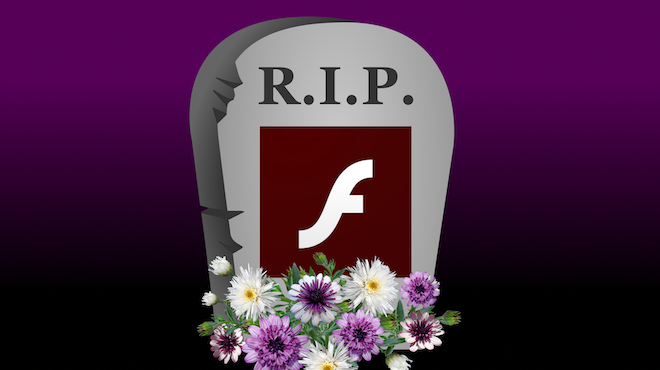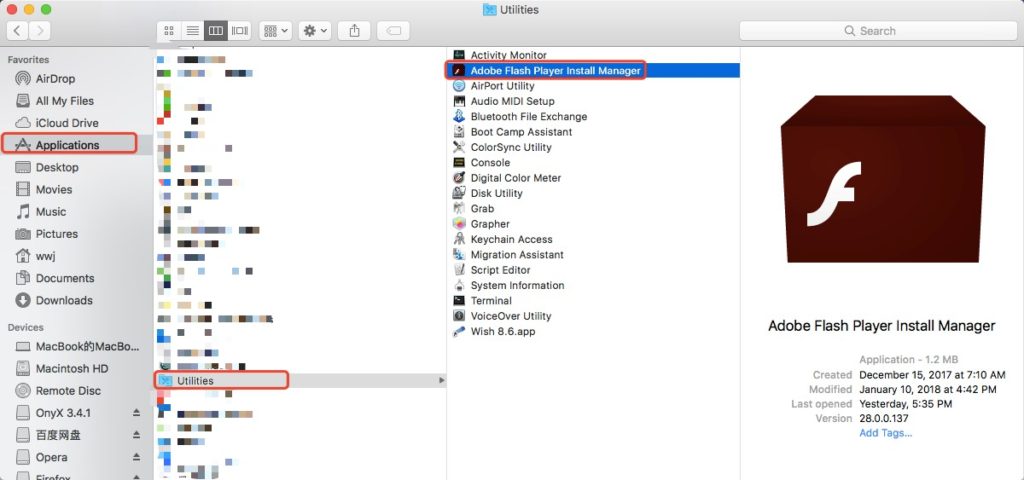The end is officially here for Adobe Flash. As previously announced, Adobe has confirmed that it will no longer provide support for Flash Player after December 31, 2020, and it will block Flash content from running in Flash Player beginning on January 12, 2021.
Update January 12, 2021: Adobe has officially started blocking Flash content. When you attempt to load Flash content of any kind, such as a video or game, you’ll see a new warning that directs you to the page on Adobe’s website with more details on the Flash Player end-of-life process.
Learn more in our detailed how to removing Flash from your Mac right here.

The writing has been on the wall for the end of Adobe Flash for years. Way back in 2017, Adobe announced its plans to drop support for the Flash plug-in by the end of 2020, and it is now making good on that promise.
- When you open a web page on your Mac which uses Flash player to control a video or some other Flash-based interaction and the Flash object does not display on your computer, then the Flash player plug-in might need to be enabled within the Safari web browser.
- Apr 15, 2021 Install Adobe Flash Player from Adobe's website. Installing Adobe Flash Player on your Mac is needed because Flash is not built into Safari. Make sure you've installed the app before moving forward with this method.
Jan 03, 2021 Adobe Flash Player for Mac 32.0.0.468 Adobe Flash Player is a cross-platform browser-based application runtime that delivers uncompromised viewing of expressive applications, content, and videos.
As Adobe has worked to wind down Flash over the last three years, Apple’s message has been consistent. The company emphasized on its WebKit blog at the time of Adobe’s announcement that the transition from Flash began in 2010 for Apple users:
Apple users have been experiencing the web without Flash for some time. iPhone, iPad, and iPod touch never supported Flash. For the Mac, the transition from Flash began in 2010 when Flash was no longer pre-installed. Today, if users install Flash, it remains off by default. Safari requires explicit approval on each website before running the Flash plugin.
But of course, the relationship between Apple and Adobe in regards to Flash had been strained for years, ever since Steve Jobs famously published his “Thoughts on Flash” piece back in 2010 to address what was a major point of criticism at the time for iPhones and iPads as computer replacements.

I wanted to jot down some of our thoughts on Adobe’s Flash products so that customers and critics may better understand why we do not allow Flash on iPhones, iPods and iPads. Adobe has characterized our decision as being primarily business driven – they say we want to protect our App Store – but in reality it is based on technology issues. Adobe claims that we are a closed system, and that Flash is open, but in fact the opposite is true.
In the letter, Jobs bemoaned Flash for its many flaws, including things like reliability, security, battery life, and performance. While Adobe contested Jobs’ claims at the time, Apple never did bring Flash to the iPhone and iPad, and Flash’s downfall began shortly thereafter.
Adobe has a website dedicated to providing information about the end-of-life plans for Flash, saying that users should uninstall Flash from their computers immediately to “help protect their systems.”
Since Adobe will no longer be supporting Flash Player after December 31, 2020 and Adobe will block Flash content from running in Flash Player beginning January 12, 2021, Adobe strongly recommends all users immediately uninstall Flash Player to help protect their systems. Some users may continue to see reminders from Adobe to uninstall Flash Player from their system.
You can find more information on the Adobe website.
Read more:
FTC: We use income earning auto affiliate links.More.
Got a message that says you have to update Flash Player on Mac? Don’t promptly click the update button. If you are not careful, you can accidentally install adware or malware instead of Flash Player. And that’s not what you need, right?
In this article we’ll show you the best way to check for Flash updates and also give you a comprehensive guide to update Adobe Flash Player for Mac safely. Plus, we’ll tell you how to uninstall it from your computer completely.
What is Flash Player?
For years, Adobe Flash Player has been one of the most popular plug-ins used by web browsers to reproduce videos, web ads, and interactive animations. But now its position is rocked by some security concerns and safer alternative solutions.
Google Chrome and Firefox contain the built-in version of Flash running in the sandboxed mode. This method is safer than running Flash as a plugin. What about Safari, it disables Flash Player by default starting from macOS Sierra. The point is that Apple wants you running on HTML5 — the newer and safer way of browsing the web. It supports the same multimedia elements as Flash but without any security issues.
However, the reality is that you still may need the Adobe Flash Player on your Mac. Many websites will not work if you uninstall it completely. Live streams like BT Sport can only be delivered in Flash, so if you are the BT Sport customer, you’ll want to keep the Flash Player. In addition, a great number of gaming and education sites use Flash and until they implement the HTML5 standards, you’ll need the Flash Player.
Why watch out for Flash updates on Mac?
Adobe is always trying to push its technology further and release the Flash updates to enhance the user experience and security. However, attackers still find the ways to trick you into downloading adware and malware through the popups. That’s why you should know how to protect your Mac against the malicious attacks when you’re trying to update your Adobe Flash for Mac.
Fortunately, it’s easy to make sure that you are installing the real Flash for Mac and are not exposed to the vulnerable software. All you have to do is to be careful and don’t trust the automatic updates.
How to update Flash Player on Mac (if it’s already installed)
Adobe Flash Macbook
Instead of downloading anything from a popup, follow simple steps to check whether you really need to update Adobe Flash on Mac.
Go to the Apple menu and click System Preferences.
In the bottom left corner, choose Flash Player.
Choose the Updates tab.
Click the Check Now button.
If an update is available, click Yes to update. If no updates are available, you have the latest version of a Flash Player for Mac installed.

Easy enough, right? Make sure to invest some time and check if you do need to update Flash. Otherwise, downloading a false software package may harm your computer.
Flash Player Mac Firefox
How to install Flash on your Mac safely
If Flash is not installed, which is by default on all new Macs, here’s a step-by-step guide to install it safely.
Visit the Adobe Flash Player page.
Click the Download now button.
The installer will download to your computer. If you’re using Safari, the file will go to your Downloads folder. If you’re using another browser, it may ask where to save the file.
Open your Downloads folder and find the .dmg installer file.
Double-click the Install Adobe Flash Player file.
You will be asked if you really want to install Adobe Flash Player. Read the message carefully to make sure that it’s the file you just downloaded. Click Open to proceed.
Agree to terms and conditions by clicking a checkbox.
Click the Install button.
In the window that appears, type your username and password.
Click the Install Helper button.
Click Allow Adobe to install updates (recommended).
Click Done.
That’s it. It’s also recommended to relaunch your web browser after installing Flash.
How to uninstall Flash completely
If you’re concerned about the security flaws associated with your Adobe Flash Player, we’ll show you how to uninstall it from your Mac.
Usually, uninstalling Flash can cause a bit of headache. But with CleanMyMac X, you can remove Adobe Flash Player in a few clicks. Just follow these simple steps:
Download CleanMyMac X and launch it.
Go to the Extensions in the sidebar.
Click Preferences Panes and then checkmark Flash Player.
Click the Remove button.
As you see, uninstalling Flash with CleanMyMac X is as easy as pie. Moreover, the whole process won’t take more than five minutes. Try it out to uninstall Flash Player on Mac completely.
That’s it! Follow the tips above and don’t let the tricky popups and websites take advantage of you. This way you’ll stay up-to-date safely.
